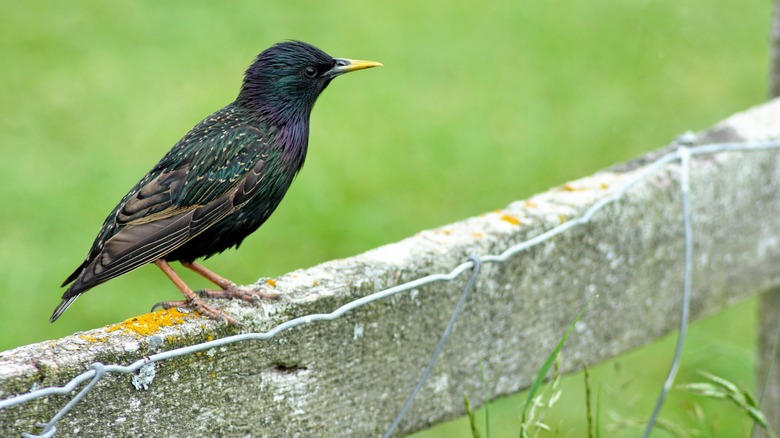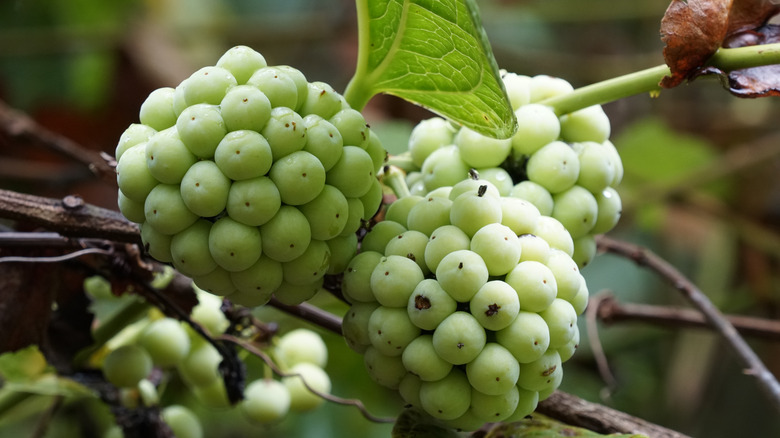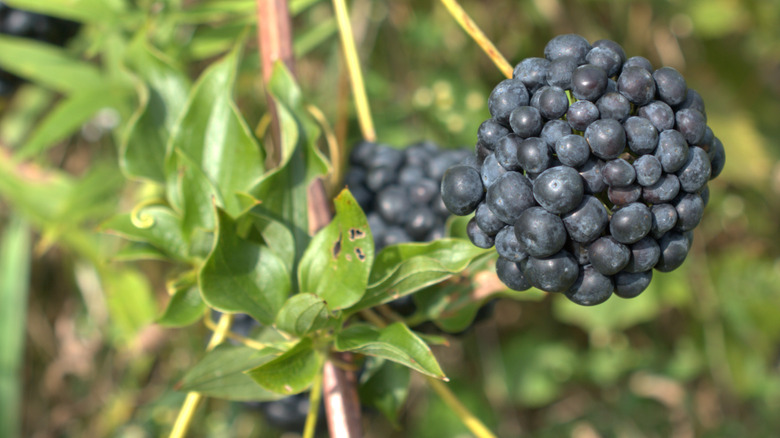This Native Vine Might Be Stinky To You, But Birds & Other Pollinators Love Its Odor
When people think of floral smells from their favorite plants, rotting meat isn't generally what they envision, but in the case of carrion flower vine (Smilax herbacea) that's exactly what its flowers smell like. Despite the unpleasant odor, carrion flower vines are popular with birds, bees, and butterflies. If you have the space to plant this fascinating vine, it could be a fantastic addition to native gardens and pollinator gardens, and a climbing plant you should grow on your property.
Bird watchers especially may want to find a spot for the carrion flower vine, thanks to its berries' appeal to birds — including ruffled grouse and wild turkey. Songbirds also love the carrion flower vine's dark purple berries, and bees and butterflies enjoy its flowers despite their distinctive smell. Animals aren't the only ones who consider the carrion flower vine delicious. The plants' shoots are fully edible and are sometimes cooked and eaten like asparagus. The berries, roots, and leaves are also edible.
Caring for carrion flower vines in your garden
Carrion flower vines are hardy in zones 4 through 8 and are native to eastern and midwestern North America. They thrive in moist soil and are surprisingly tolerant of a variety of soil pHs, ranging from acidic to alkaline, and can grow in everything from full sun to deep shade. Unlike many of their relatives in the Smilex genus, they are thornless and climb using tendrils.
Carrion flower vines are dioecious, meaning some plants are male and others female, so gardeners who want their female carrion flower vines to produce fruit will need to make sure they have at least one male and one female plant. If you start your own carrion flower vines from seeds, you should be able to tell the male plants from the female plants by examining the flowers once the plants mature. The flowers on the males should have six stamens, while the flowers on the females should have a pistil and three stigmata.
Best practices for carrion flower vines on your property
Like many plants with a rotten meat smell, the carrion flower vine is primarily pollinated by carrion flies, which also lay their eggs on the plant. Other pollinator flies and beetles enjoy this plant as well. Thanks to both its smell and the flies it attracts, most gardeners won't want this vine growing too close to their house. Another reason to avoid growing carrion flower vines near your house is their high flammability. The North Carolina State Extension advises against growing carrion flower vines and other similarly flammable plants "within the defensible space of your home." Luckily, there are plenty of other wonderful native vines to attract birds to your garden, including trumpet vine, American wisteria, and crossvine, for gardeners who don't have the space or olfactory tolerance necessary for the carrion flower vine.
For gardeners who have the space to avoid the smells, flies, and fire hazards posed by the carrion flower plant, these vines should grow well in a garden with plenty of native pollinator plants. Providing your carrion flower plant with a trellis, either a store-bought structure or a DIY trellis made with items you already own, will allow it to grow vertically, providing plenty of space for smaller water-loving plants to thrive near it. Swamp milkweed and hardy hibiscus are both native plants that thrive in similar conditions to carrion flower vines and would make excellent rain garden companions.


